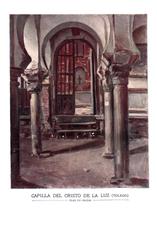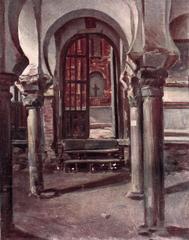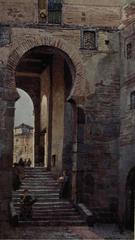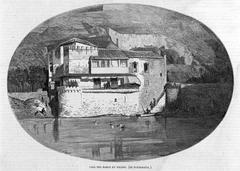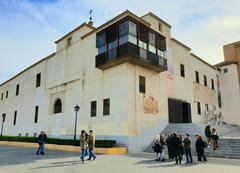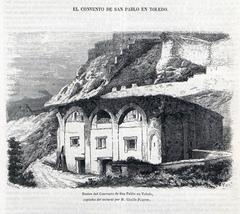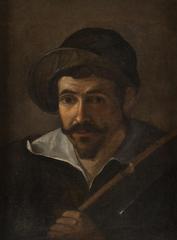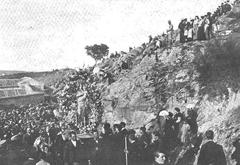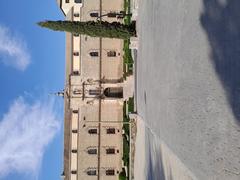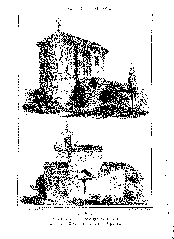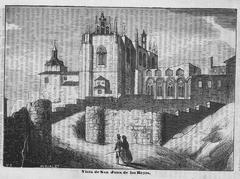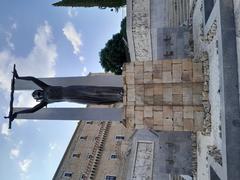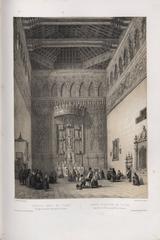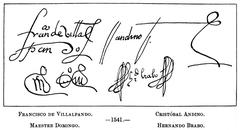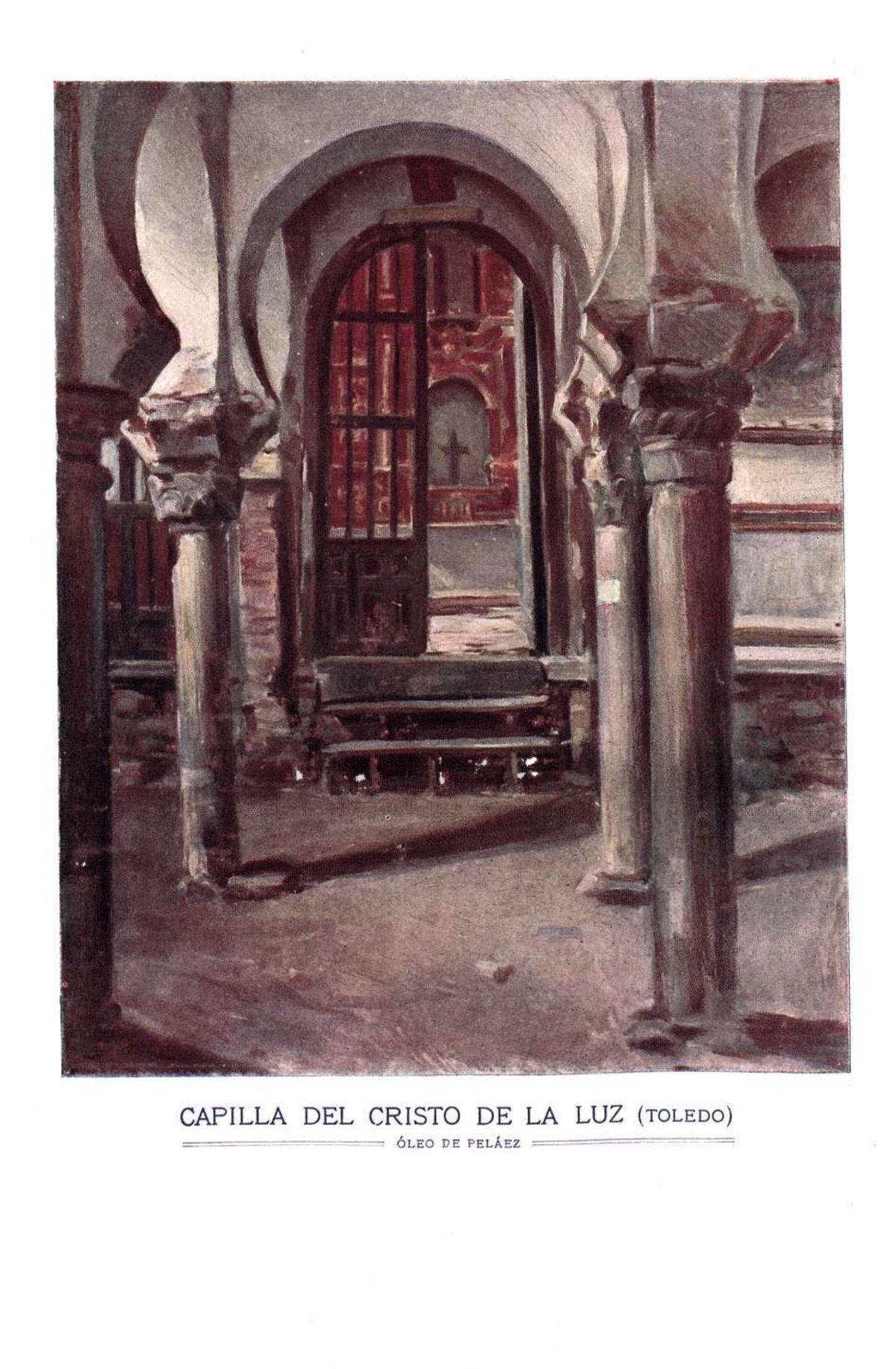
Mosque of Cristo de la Luz Toledo: Visiting Hours, Tickets, and Visitor Guide
Date: 14/06/2025
Introduction
Nestled in the historic center of Toledo, Spain, the Mosque of Cristo de la Luz is a striking example of the city’s layered multicultural past. Constructed in 999 CE during the Caliphate of Córdoba, this small yet architecturally significant mosque—also known as Mezquita Bab al-Mardum—offers an exceptional window into Islamic, Christian, and Jewish influences that have shaped Toledo. Its proximity to the ancient Puerta del Sol and presence within the Medina district underscore its importance as both a religious and community hub throughout centuries (Wikipedia, UNESCO).
This guide explores the mosque’s history, architectural uniqueness, cultural legacy, and provides essential visitor information, including opening hours, ticketing, accessibility, and travel tips to help you make the most of your visit (Toledo Turismo).
Table of Contents
- Historical Overview
- Cultural and Religious Significance
- Architectural Highlights
- Practical Visitor Information
- Visuals and Media
- Frequently Asked Questions (FAQ)
- Summary & Call to Action
- References
Historical Overview
Origins and Foundation
The Mosque of Cristo de la Luz, originally called Mezquita Bab al-Mardum, was commissioned in 999 CE by Ahmad ibn Hadidi, as confirmed by a Kufic inscription on its façade. This inscription credits the mosque’s construction to his patronage and notes its completion in the Islamic month of Muharram, 390 AH. The mosque’s location near the city’s main gate (Bab al-Mardum) placed it at the heart of Toledo’s affluent Muslim quarter (Madain Project, Atlas Islamica).
Architectural Evolution
Islamic Period
Measuring approximately 8 by 8 meters, the mosque’s compact, nearly cubic structure is a hallmark of 10th-century Islamic architecture in Al-Andalus. Its nine-bay plan is defined by four central columns with Visigothic and Roman capitals, supporting a series of ribbed vaults. Each vault is uniquely designed, and the central bay rises to form a cupola—an early precursor to Western Gothic vaulting (Wikipedia, Arteguias).
The use of spolia—columns and capitals from earlier Roman and Visigothic buildings—highlights the layering of cultures in Toledo. Horseshoe arches, intricate brickwork, and ornamented blind arcades evoke the architectural language of the Great Mosque of Córdoba (Museum With No Frontiers, Hidden Architecture).
Christian Conversion and Mudéjar Influence
After Toledo’s Christian reconquest in 1085, the mosque was consecrated as a church, “Cristo de la Luz.” Rather than demolishing the structure, Christian rulers adapted it, adding a Mudéjar-style semicircular apse in the late 12th century. The apse blends Islamic and Romanesque features and is adorned with frescoes depicting Christ Pantocrator, tetramorphs, and angelic figures, reflecting the city’s ongoing religious and artistic synthesis (Toledo Travel Guide, UNESCO).
Cultural and Religious Significance
The Mosque of Cristo de la Luz is a living testament to Toledo’s reputation as the “City of Three Cultures.” Its survival through centuries of political and religious transformation speaks to the city’s complex identity and the pragmatic adaptation of architectural heritage. The integration of Visigothic, Islamic, and Christian elements within a single monument offers a powerful symbol of coexistence and cultural dialogue (Holly Melody).
Architectural Highlights
- Exterior: Compact, rectangular form (approx. 8 x 8 meters) with intricate brickwork and horseshoe arches. The foundation inscription is visible on the main façade (Museum With No Frontiers).
- Interior: Nine square bays divided by four columns with Visigothic and Roman capitals. Each bay is capped by a unique ribbed vault, the central one forming a cupola.
- Mihrab and Qibla Wall: The original Islamic mihrab is located on the southeast wall; the later Christian apse covers this area and is decorated with faded frescoes.
- Mudéjar Apse: Added after the Christian conquest, the apse features brickwork, horseshoe arches, and Romanesque frescoes.
- Gardens: Restored Arab-style gardens provide a serene setting and views over Toledo’s northern quarter (Guías Viajar).
- Lighting: Small, strategically placed windows allow natural light to animate the vaults and arches, especially in the morning (Itinerartis).
Practical Visitor Information
Visiting Hours and Tickets
- Hours: Generally open Tuesday to Sunday, 10:00 AM – 6:00 PM (seasonal variations may apply; always check official sources before your visit).
- Closed: Mondays and certain holidays.
- Tickets: Adult admission is around €3; discounts available for students, seniors, and groups. Purchase onsite or online.
Accessibility
- The site is partially accessible. There are some steps and uneven surfaces inside; contact visitor services in advance for assistance if needed.
- No public restrooms on-site; facilities are available nearby in the city center.
Guided Tours & Travel Tips
- Tours: Guided tours in multiple languages are available and highly recommended for historical context. Book in advance, especially during peak season.
- Best Times: Early mornings or late afternoons provide softer light and fewer crowds.
- Dress Code: Respectful attire recommended due to the site’s religious heritage.
Photography & Visitor Etiquette
- Photography is permitted without flash or tripods to protect the artwork and ensure a pleasant experience for all.
- Maintain a respectful atmosphere; keep noise to a minimum.
Nearby Attractions
- Puerta del Sol: Ancient city gate steps from the mosque.
- Alcázar of Toledo: Imposing fortress-museum nearby.
- Toledo Cathedral: Gothic masterpiece within walking distance.
- Jewish Quarter: Explore historic synagogues and charming streets.
- Zocodover Square: Lively heart of Toledo, ideal for refreshments and people-watching.
Visuals and Media
- Images: Include high-resolution photos with descriptive alt tags:
- “Exterior view of Mosque of Cristo de la Luz in Toledo”
- “Interior ribbed vaults of Mosque of Cristo de la Luz”
- “Mudéjar apse frescoes at Mosque of Cristo de la Luz”
- “Traditional Arab gardens surrounding Mosque of Cristo de la Luz”
- Interactive Map: Use official tourism platforms for up-to-date maps and virtual tours.
Frequently Asked Questions (FAQ)
Q: What are the visiting hours of the Mosque of Cristo de la Luz?
A: Typically Tuesday to Sunday, 10:00 AM to 6:00 PM. Closed Mondays; check for seasonal changes.
Q: How much is admission?
A: About €3 for adults; discounts for students, seniors, and children.
Q: Is the mosque wheelchair accessible?
A: The mosque is partially accessible. Some uneven flooring and steps may require assistance.
Q: Are guided tours available?
A: Yes, guided tours in several languages can be booked onsite or in advance.
Q: Can I take photos inside?
A: Photography is allowed without flash or tripods.
Q: What else can I visit nearby?
A: The Alcázar, Toledo Cathedral, Jewish Quarter, and Puerta del Sol are all within walking distance.
Summary and Call to Action
The Mosque of Cristo de la Luz embodies Toledo’s remarkable history of religious, cultural, and artistic fusion. Its unique blend of Islamic, Visigothic, and Christian influences makes it an essential visit for anyone exploring Spain’s multicultural heritage. With easy access, affordable entry, and proximity to other major sites, the mosque offers a rewarding and enriching experience.
Plan your visit today:
- Check current hours and ticketing options on the official Toledo tourism website.
- Download the Audiala app for guided tours and the latest updates.
- Explore nearby attractions for a full day of Toledo’s historical wonders.
References
- Wikipedia
- Madain Project
- Atlas Islamica
- Toledo Turismo
- Spain.info
- Holly Melody
- Arteguias
- Hidden Architecture
- UNESCO
- Itinerartis
- Museum With No Frontiers
- Guías Viajar
For more travel inspiration and updates, follow us on social media and explore our related articles on Toledo’s historical landmarks.
